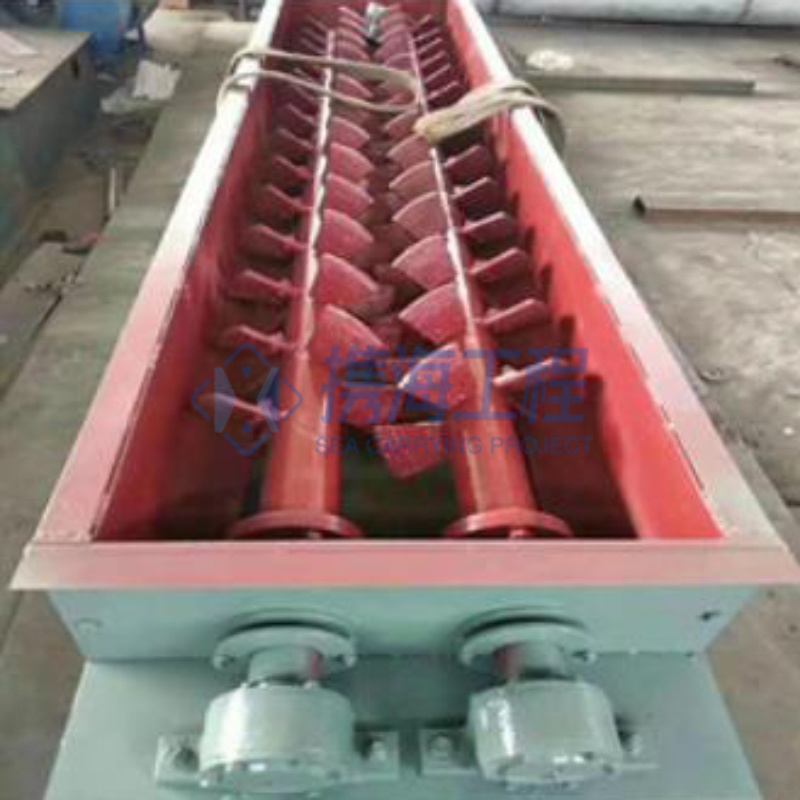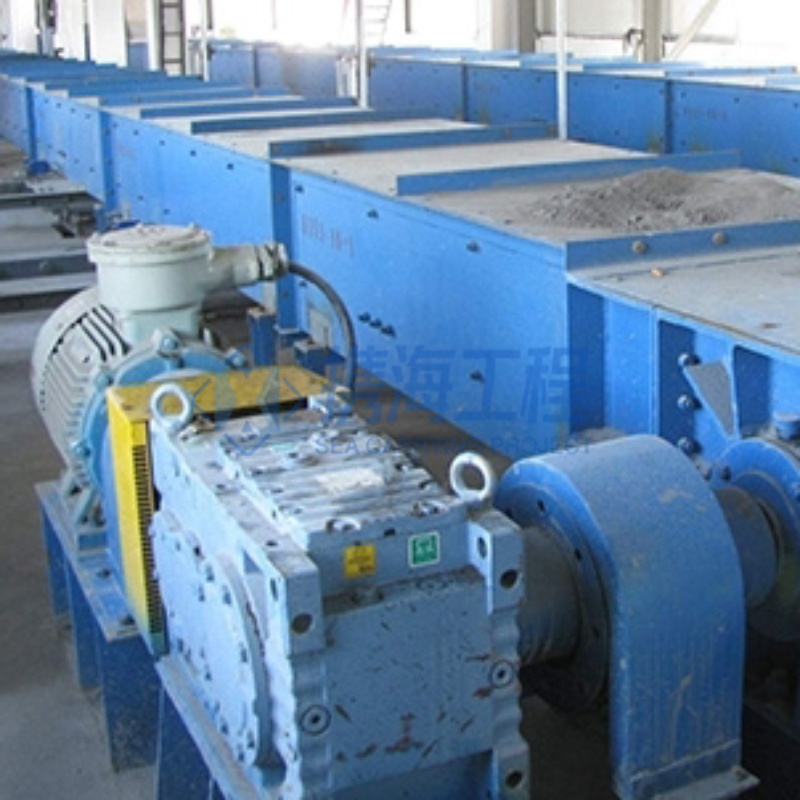Why Every Manufacturer Needs Humidifying Stirring Equipment: A Comprehensive Guide
Nov 17,2025
Why Every Manufacturer Needs Humidifying Stirring Equipment
Manufacturing processes are evolving rapidly, with new technologies and methods enhancing productivity and product quality. Among these advancements, **humidifying stirring equipment** has emerged as a crucial component for many manufacturers. This article delves into the significance of humidifying stirrers, their benefits, and why they

Why Every Manufacturer Needs Humidifying Stirring Equipment
Manufacturing processes are evolving rapidly, with new technologies and methods enhancing productivity and product quality. Among these advancements, **humidifying stirring equipment** has emerged as a crucial component for many manufacturers. This article delves into the significance of humidifying stirrers, their benefits, and why they are indispensable in various manufacturing sectors.
Understanding Humidifying Stirring Equipment
Humidifying stirring equipment refers to specialized machinery designed to mix materials while controlling humidity levels. The equipment typically includes integrated humidifiers that maintain optimal moisture in mixed materials, ensuring consistent product quality. The dual functionality of stirring and humidifying makes these machines unique and essential in many manufacturing environments.
The Importance of Humidity in Manufacturing
Humidity plays a pivotal role in numerous manufacturing processes. Various materials, especially powders and granules, can be adversely affected by low humidity levels. Too much dryness can lead to:
- **Clumping:** Dry materials can clump together, making it difficult to achieve a uniform mix.
- **Dust Formation:** Low humidity increases dust production, which can be hazardous and reduce product quality.
- **Quality Degradation:** Many products, particularly in food and pharmaceuticals, require specific moisture levels to maintain their integrity.
By utilizing humidifying stirring equipment, manufacturers can mitigate these issues, ensuring materials remain in optimal condition throughout the mixing process.
Key Benefits of Humidifying Stirring Equipment
Integrating humidifying stirring equipment into manufacturing processes offers several advantages:
1. **Enhanced Product Quality:** Maintaining consistent humidity levels ensures uniformity in the final product, reducing defects and enhancing quality.
2. **Improved Safety:** Reducing dust formation minimizes health risks for workers and improves safety in the manufacturing environment.
3. **Operational Efficiency:** These machines streamline the mixing process, reducing downtime and increasing productivity.
4. **Versatility:** Humidifying stirrers can be adapted for various materials and industries, from food production to pharmaceuticals.
5. **Reduced Waste:** By ensuring that materials do not clump or degrade, manufacturers can minimize waste and optimize resource use.
Applications of Humidifying Stirring Equipment
Humidifying stirring equipment is employed in various industries, including:
Food Processing
In food manufacturing, maintaining the right moisture levels is essential for preserving flavor, texture, and nutritional value. Humidifying stirrers are used to mix dry ingredients, control moisture levels in dough, and ensure a consistent texture in products like powdered spices and baking mixes.
Pharmaceutical Manufacturing
Pharmaceutical products often require precise humidity control to ensure efficacy and safety. Humidifying stirrers facilitate the production of tablets and powdered medications by preventing clumping and ensuring a uniform composition.
Chemical Production
In chemical processing, humidity can significantly impact reaction rates and product quality. Humidifying stirring equipment allows manufacturers to maintain optimal conditions for chemical reactions, resulting in higher yields and better quality products.
Cosmetic and Personal Care Products
For cosmetics and personal care products, moisture retention is key to preserving the desired texture and performance. Humidifying stirrers mix ingredients while maintaining appropriate humidity levels, ensuring a consistent product that meets consumer expectations.
Factors to Consider When Choosing Humidifying Stirring Equipment
Selecting the right humidifying stirring equipment involves evaluating several key factors:
1. Capacity and Size
Manufacturers should assess their production needs to determine the appropriate size and capacity of the equipment. Larger operations may require high-capacity machines that can handle significant volumes, while smaller manufacturers may opt for more compact units.
2. Material Compatibility
The materials being processed will influence the choice of equipment. Different materials have different moisture requirements, and manufacturers must ensure that their humidifying stirrers can accommodate these needs.
3. Ease of Use and Maintenance
User-friendliness is crucial for ensuring smooth operations. Equipment that is easy to operate and maintain will save time and reduce operational costs. Features like automated controls and easy-clean designs can enhance usability.
4. Technology and Features
Modern humidifying stirring equipment often comes equipped with advanced technology, such as sensors for monitoring humidity levels and automated mixing functions. Manufacturers should evaluate the technology and features available to find the best match for their needs.
5. Cost and Investment
While investing in humidifying stirring equipment may seem costly upfront, the long-term benefits can outweigh the initial expense. Manufacturers should consider the potential savings from reduced waste, improved product quality, and enhanced efficiency when evaluating costs.
Maintenance Tips for Humidifying Stirring Equipment
Proper maintenance is essential for ensuring the longevity and efficiency of humidifying stirring equipment. Here are some tips to keep in mind:
Regular Cleaning
Routine cleaning is vital to prevent material buildup and contamination. Manufacturers should establish a cleaning schedule based on usage frequency and material types.
Monitor Humidity Levels
Regularly check and calibrate humidity sensors to ensure accurate readings. Maintaining optimal humidity levels is crucial for the effectiveness of the equipment.
Inspect Mechanical Components
Routine inspections of mechanical components, such as motors and stirrers, will help identify any wear or damage early on. Addressing issues promptly can prevent costly downtimes.
Follow Manufacturer Guidelines
Always adhere to the manufacturer's maintenance and operation guidelines to maximize the lifespan and functionality of the equipment.
Conclusion
In today's rapidly evolving manufacturing landscape, **humidifying stirring equipment** plays a crucial role in ensuring product quality, operational efficiency, and safety. By controlling humidity levels during mixing processes, manufacturers can prevent common issues associated with low humidity, such as clumping, dust formation, and quality degradation.
Investing in humidifying stirring equipment not only enhances product quality but also improves overall productivity and safety in the manufacturing environment. As industries continue to advance, the importance of incorporating modern, efficient machinery like humidifying stirrers cannot be overstated.
Frequently Asked Questions (FAQs)
1. What is the primary function of humidifying stirring equipment?
The primary function of humidifying stirring equipment is to mix materials while controlling humidity levels, ensuring consistent product quality and preventing issues related to dryness.
2. In which industries is humidifying stirring equipment commonly used?
Common industries include food processing, pharmaceuticals, chemical production, and cosmetics, where humidity control is critical for product quality.
3. How does humidity affect product quality in manufacturing?
Humidity impacts material properties, and inadequate humidity can lead to clumping, dust formation, and degradation of product quality.
4. What are the key factors to consider when selecting humidifying stirring equipment?
Key factors include capacity and size, material compatibility, ease of use and maintenance, technology and features, and overall cost.
5. How can I maintain my humidifying stirring equipment?
Regular cleaning, monitoring humidity levels, inspecting mechanical components, and following manufacturer guidelines are essential for proper maintenance.
Previous article






